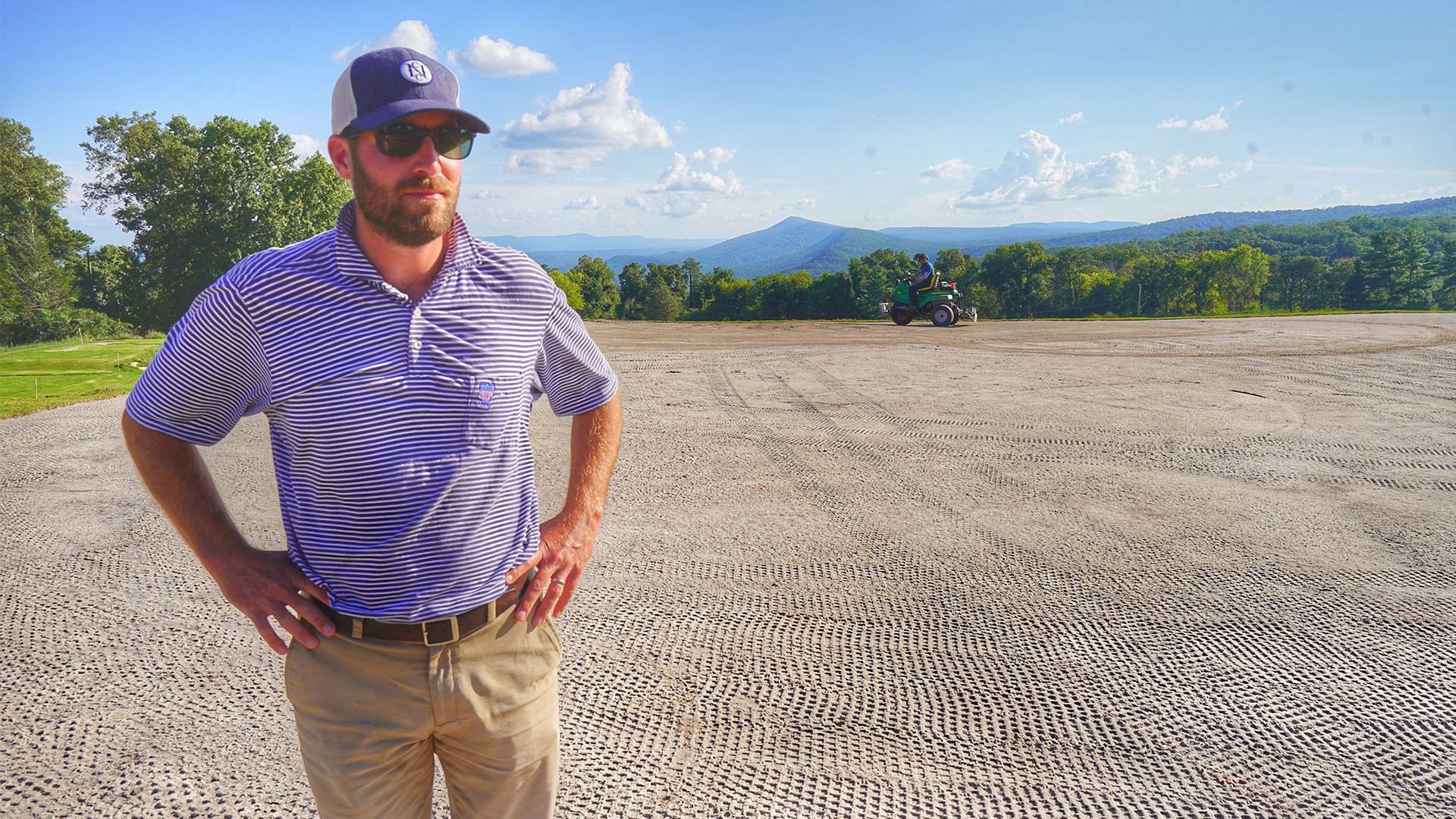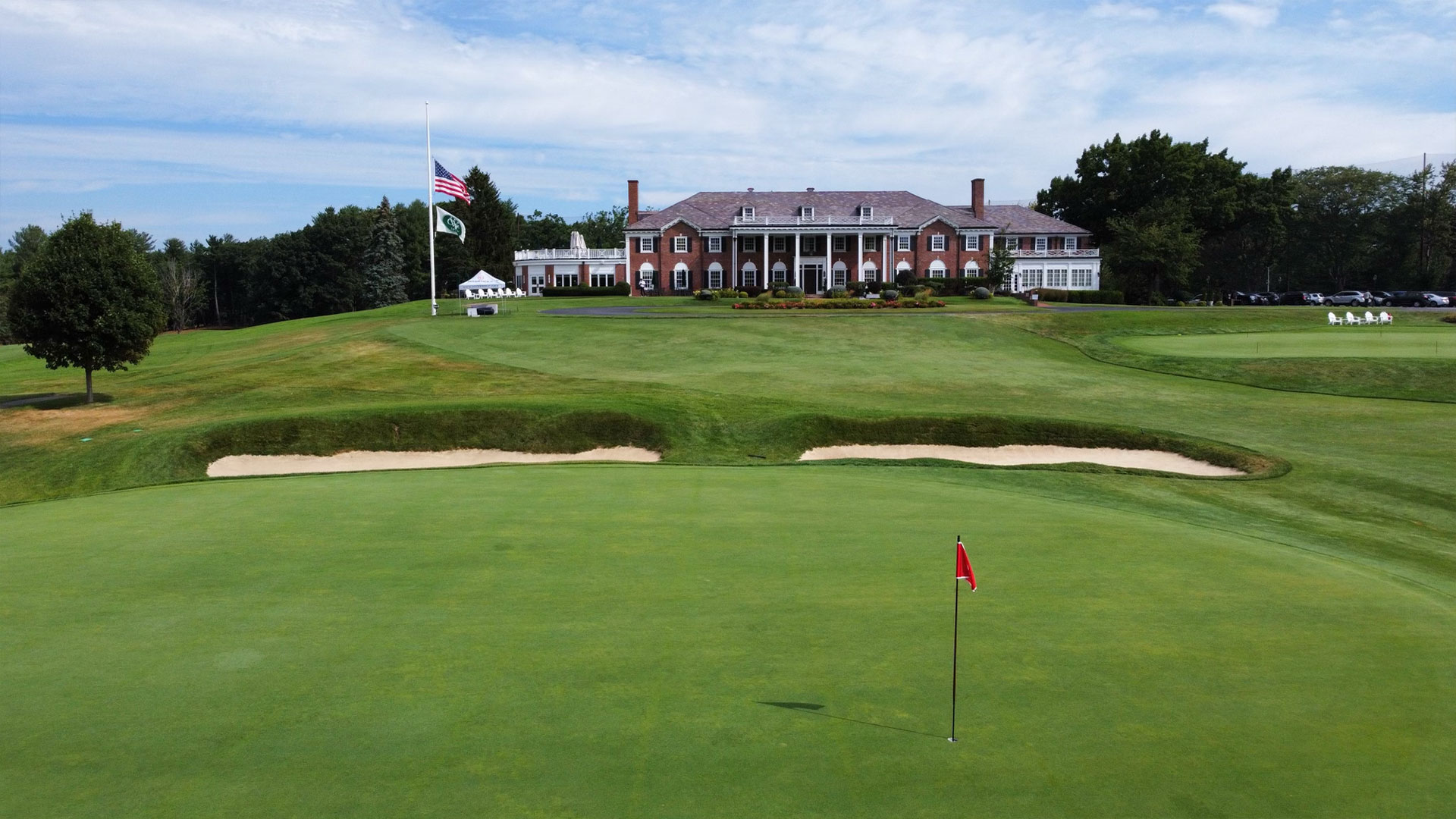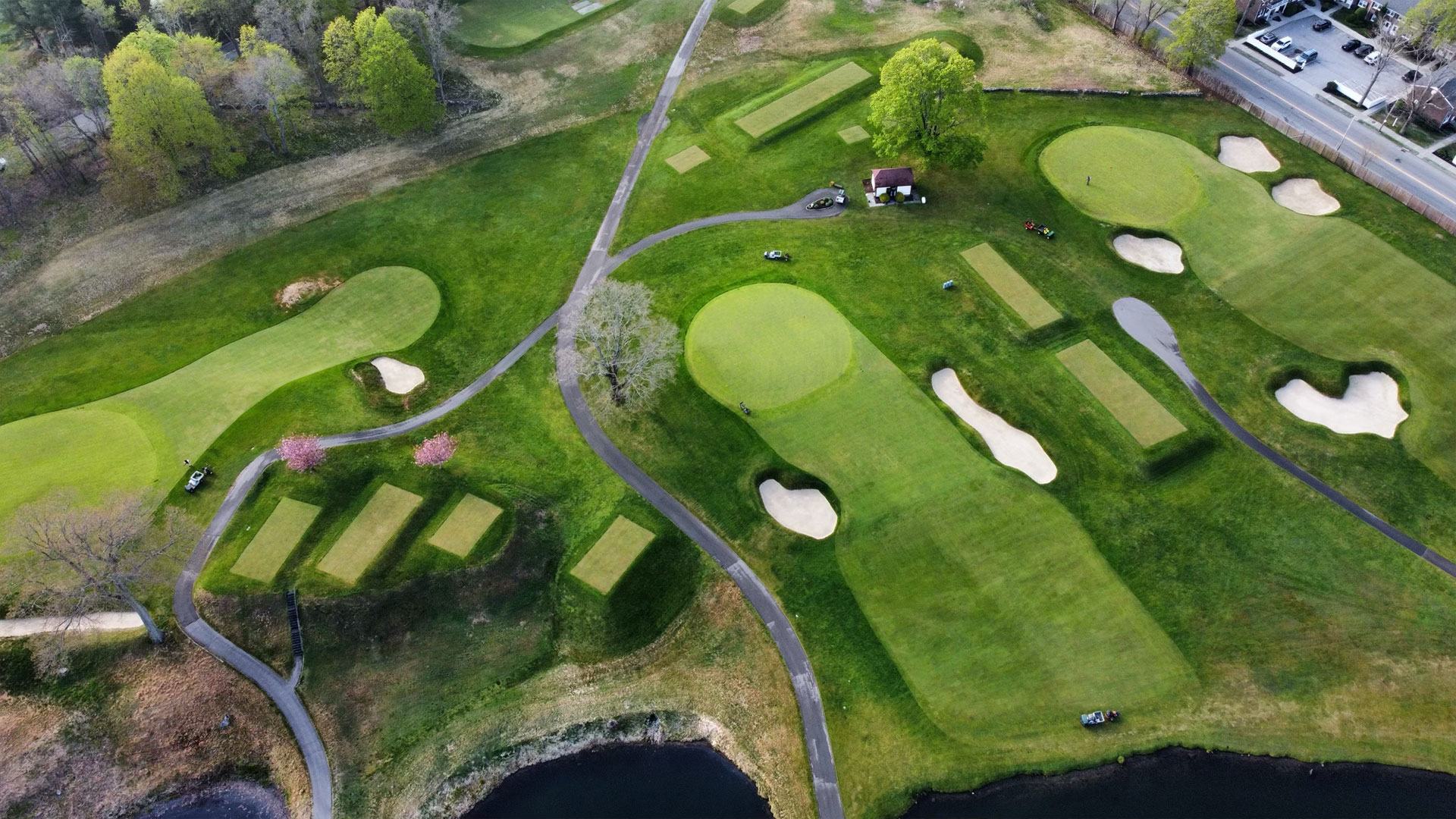By Steve Derderian
sderderian@massgolf.org
If you play golf in New England, there’s a good chance the course you’re playing was here before you. These living, breathing landscapes will probably be here long after you as well, but ensuring a sustainable future requires investment, expertise, and tons of careful planning and execution.
Many of the top-rated clubs in Massachusetts have seen renovation projects and master plans from the likes of Mungeam and Silva to national figures like Hanse, Forse, and Coore & Crenshaw. Another big name in the architecture world that has been making a splash lately is Tyler Rae, who has a special eye for Donald Ross courses. He most recently took the lead on and executed the master plan for Woodland Golf Club in Newton, a 1903 Donald Ross and Alex Findlay layout, and now he has his eye on reshaping more historic venues in Massachusetts.

When it comes to Ross courses, there’s not much Rae has yet to see, quite literally. With a visit to Memphis Country Club (TN) this week, he is less than 10 courses away from visiting the full list of about 360 Ross courses that still exist.
Rae is a Ross aficionado, in part, because the original features on the course often outshine any alterations made decades later. When pouring over historic aerials and plans, Rae tries to establish a year where the course was at its best version, and then puts the puzzles pieces together.
“When a club calls, I want to look at the year,” Rae said. Then I can determine what period style it was built in. Because there are many different layers of how these architects evolved. If something like at Essex was 1909 by Ross. A lot of his greens were wide open, so you could run the ball in. And the ball was running out more back then and the hazards were usually to catch balls on the side of golf holes.”
Rae has a keen interest in Massachusetts golf courses, and not just because of the history. He said he’s enamored with the usage of rock and mounding which is rare in other parts of the country. Clubs like Cohasset Golf Club, The Country Club and Essex County Club feature many grassed-over rock formations and rock outcroppings within their layouts. He also had high praise for George Wright Golf Club, the highly esteemed municipal course that used the rocks removed from the course to form the walls surrounding the property. He’s also reviewed plans with Plymouth Country Club, referring to it as “the most underrated course in the Boston area.”
What’s more, many of these courses were visited by Ross multiple times, giving Rae a more complete picture of how these layouts evolved over time.
“There’s a fullness of architecture from Ross because he lived here so long,” Rae said. “What I’ve learned is that where Ross was involved and the land was pretty spectacular, the place ended up really good.”

So how did somebody from the Delaware Valley become so familiar with Massachusetts golf courses?
A talented junior golfer, Rae attended the University of Kentucky beginning in the early 2000s and initially thought of joining the golf team. However, with future PGA TOUR talent on the squad, including 5-time tour winner J.B. Holmes, he turned his focus from a future in pro golf to a career in Landscape Architecture. Prior to owning his own firm, Rae was working at Wilmington Country Club (DE) at the same time Keith Foster was hired to renovate the club, and the club president helped land him a job on the crew. There he gained expertise in everything from drainage to tree work to irrigation, and later the business side of the operation.
Foster eventually hired Rae as a design assistant where he worked together to produce plans for 20 different courses, including Eastward Ho!, a top 100 course located along coastal Chatham on Cape Cod. He also helped Ron Prichard on plans for Worcester Country Club.
His first big study, however, came in 2008 when spent six months in Kennebunkport, Maine, working on projects for Tom Doak and Bruce Hepner. With Sundays off, he’d drive across the Bay State and study the historic courses in the area and introducing himself to club leaders.
“I went anywhere you could think of; I visited probably 40 courses with architectural character,” Rae said. “Salem Country Club all the way down to Oyster Harbors on Cape Cod, Essex County Club, Myopia Hunt Club, Oak Hill Country Club, and many more.
“If I wanted to create my own business one day, I knew I needed clients, so I knocked on doors and visited courses and kept in touch with them,” he added. “By spending that time looking and walking courses and studying them, I learned something every single time.”

Rae now operates a busy firm with four team members and one of his new major venues he’s been tasked with restoring is the venerable Detroit Golf Club, Ross’ first 36-hole design he created 1914, which hosts the PGA TOUR’s annual Rocket Mortgage Classic. More locally, Rae is also working at Nantucket’s Miacomet Golf Club, which co-hosted stroke play for the 2021 U.S. Mid-Amateur Championship.
With the most recent boom in golf over the past 2-3 years, there’s been no shortage of requests coming in from clubs looking to renovate or restore their golf course. At the end of the day, Rae not only wants to enhance the beauty of the golf courses he works on but leave a lasting impact on it with the players.
“I want you to enjoy and look forward to visiting your club,” Rae says. “I want the members clamoring to get back to the club to play their course again and again. That means it’s an enjoyable and successful renovation or restoration because it’s enduring and lasting work that has been thoughtfully and tastefully carried out.”
With so many courses in Massachusetts either approaching or past the century mark, don’t be surprised if you start seeing his name more often around these parts.